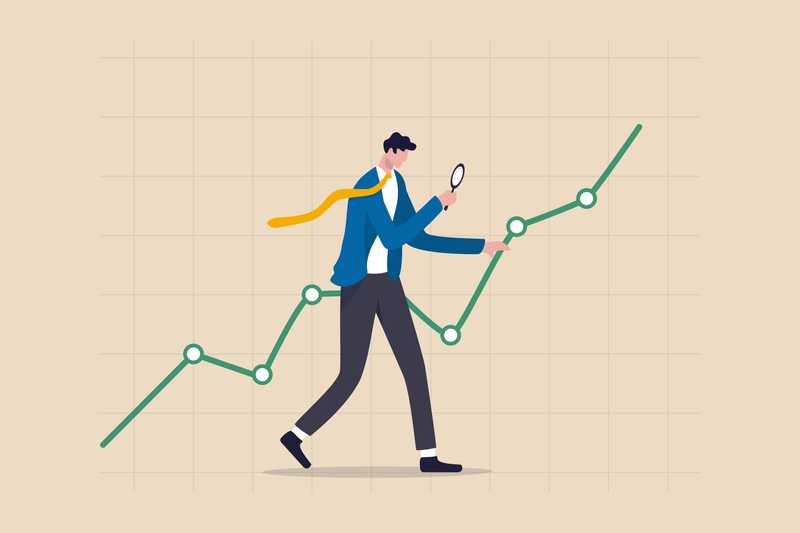Quantitative Analyst vs. Data Scientist: What’s the Difference?

In this article
The global big data market is continuing to grow at a rapid pace. According to Statista, the market will double by 2027 as more and more businesses discover a need for workers who are capable of breaking company data down into a digestible, usable format.
Quantitative analysts and data scientists fill similar roles within organizations looking to mine valuable insights from data. The main difference between the two is how they work with the information.
Data scientists and quantitative analysts have similar jobs: both use data and analytics to solve complex business problems. But, there are significant differences between each job. Understanding the differences between the two roles may help you figure out which career path suits you best. Find out more in this guide.
What Is a Quantitative Analyst?

Quantitative analysts build, design, and implement complex data models. They conduct predictive analytics for institutions like:
- Investment banks
- Commercial banks
- Insurance companies
- Hedge funds
- Management consultant firms
Building on this role, technologists like quant traders are the dominant voice on trading floors. They’re analyzing trends and searching for the most profitable trades. The amount of trading spurred by computer algorithms has led to the role of trader and quant analyst merging in many trading firms.
What Does a Quantitative Analyst Do?
There are three different types of quantitative analysts, or quants, found throughout various industries:
- Front-office quants. Front-office quants work directly with salespeople and traders on the floor. They search for the most profitable trades and look for ways to mitigate risk for their employers.
- Back-office quants. Back-office quants work behind the scenes doing research and validating data models.
- Mid-office quants. Mid-office quants review assets and different markets to evaluate the potential risk they present for a firm. Many insurance companies and banks employ quantitative analysts for that purpose.
Quantitative analysts work in major financial institutions across the U.S. like New York and Chicago. Other responsibilities for quantitative analysts include:
- Using analytical tools and software to develop and implement quantitative models
- Performing statistical analysis like loan pricing and default risk modeling
- Testing new data and data models and analytic programs
- Working with data engineers, mathematicians, and other professionals to develop more effective data analysis strategies
- Interpreting and presenting data results to business stakeholders and senior executives
What Is a Data Scientist?

Data scientists work with structured and unstructured data to find solutions to complex problems and business challenges for organizations. Data scientists rely on a combination of knowledge from the worlds of computer science, mathematics, and statistics.
Examples of information worked with by data scientists include sales data from past transactions, data from social media profiles, or information collected from server logs. Data scientists analyze the data and display the results as data visualizations or reports that are more easily understood by non-data scientists.
What Does a Data Scientist Do?
Data scientists try to come up with answers to questions presented to them by an organization, like what metrics they should be tracking or how they can improve profitability around a product line. They might review customer demographic details to get a sense of customer preferences. Doing so requires designing data modeling processes, predictive models, and algorithms to extract information relevant to the query. A company could use that feedback to find features to include in a product to appeal to those consumers.
Data scientists have helped pharmaceutical companies figure out the population of individuals most responsive to a promising new drug. Airbnb relies on data science to help it with everything from reviewing different renter demographics to predicting when housing will become available at various price points.
Below is the typical process followed by data scientists when working on solutions for businesses.
- Research the use case and figure out how they can come up with ways to provide the most value to a company
- Collect the information needed to support the project
- Create statistical models to analyze for relevant information and make predictions
- Break the information down into data visualizations like a dashboard or heatmaps to help executives and other business stakeholders understand the data
- Figure out how to integrate the data science project into current business operations
Get To Know Other Data Science Students
Aaron Pujanandez
Dir. Of Data Science And Analytics at Deep Labs
Mikiko Bazeley
ML Engineer at MailChimp
Haotian Wu
Data Scientist at RepTrak
What Is the Difference Between a Quantitative Analyst and a Data Scientist?
Quantitative analysts and data scientists both analyze data and use the insights to benefit an organization. In some companies, data scientists may assume responsibility for building data pipelines to pull in the information collected from a website or stats highlighting the performance of a current marketing campaign. They clean the data, analyze the information, and create data sets. Data analysts review the data sets to reveal meaningful insights and find information executives can use to make business decisions.
Here are a few of the main differences between quantitative analysts and data scientists:
- Quantitative analysts tend to focus on more specialized problems, especially around finance
- Data scientists rely more heavily on their coding skills to build frameworks and automation systems
- Data scientists typically work on a broader array of projects
- Data scientists rely more on automation and machine learning methodologies
Quantitative analysts often use their expertise in finance, while data scientists can be found in companies that work with artificial intelligence, database management, and machine learning. Their skillsets can differ depending on an individual’s educational background.
Many quantitative analysts who work in finance are skilled at working with numbers and have master’s degrees or higher in math and finance. Data scientists tend to be experts at using technology like Hadoop and Spark.
Skills typically found among quantitative analysts include:
- Quantitative or mathematical finance
- Statistical knowledge
- Mathematical modeling
- Big Data modeling
- Financial modeling
- Programming (C++, SQL, SAS, R, Python)
- Data analytics
- Linear algebra
- Probability and statistics
- Portfolio theory
- Credit-risk models
Skills often found among individuals working as data scientists include:
- Risk analytics
- Knowledge of Big Data platforms (MongoDB, Microsoft Azure, Oracle, etc.)
- Data structures
- Data visualization and reporting (Tableau, SAS, R libraries)
- Data cleaning
- Data mining
Both roles call for soft skills like:
- Effective communication techniques (written and verbal)
- Problem-solving skills
- Ability to conduct in-depth research
- Aptitude for working cohesively with others in technical and non-technical roles
Once you start working as a quantitative analyst, you could eventually branch out into different positions like business analyst, operations analyst, financial analyst, or quantitative trader. If you are interested in becoming a data engineer or architect, then working in a data scientist role can put you on that path.
Are Quantitative Analysts and Data Scientists Paid the Same?
According to the Bureau of Labor and Statistics (BLS), people working as data scientists and in other mathematical science occupations averaged an annual salary of $98,230. Glassdoor lists the average salary of a quantitative analyst at $109,437 and that of a data scientist at $115,512.
Since you’re here…
Thinking about a career in data science? Enroll in our Data Science Bootcamp, and we’ll get you hired in 6 months. If you’re just getting started, take a peek at our foundational Data Science Course, and don’t forget to peep our student reviews. The data’s on our side.





